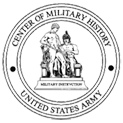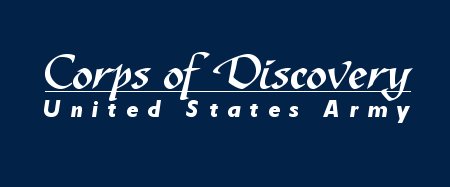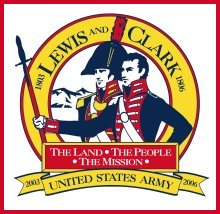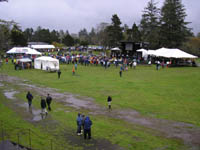 |
The opening ceremony for the Lewis and Clark Bicentennial
Commemoration National Signature Event was held at Fort Stevens, Oregon
(near the town of Warrenton) on Veterans Day. The ceremony was intended
to honor all of our nation's veterans, regardless of branch of service,
as well as the Soldiers that made up the Lewis and Clark expedition.
|
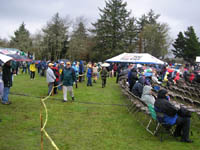 |
The extremely wet weather did not deter a large
crowd from coming out to see the VIPs who made up the official part
of the opening ceremony. The dignitaries included the Governors
of Washington State and Oregon, members of the Oregon legislature,
the Commanding General of the U.S. Army Corps of Engineers, and
The Adjutant Generals of the Washington State and Oregon National
Guard.
|
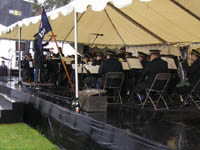 |
Musical entertainment was provided by the Oregon
National Guard's 234th Army Band and the Washington State National
Guard's 133rd Army Band.
|
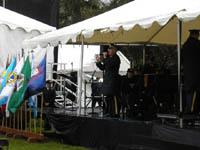 |
Chief Warrant Officer 4 Jim Powell treats the crowd
to a rendition of Lee Greenwood's "Proud to be an American".
|
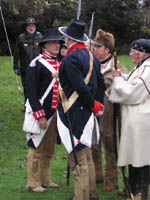 |
Reenactors in the garb of Jeffersonian Army Soldiers
were present at the opening ceremonies. The mix of Native American
clothing and military garb accurately reflect the deteriorating
condition of the expedition's military wardrobe.
|
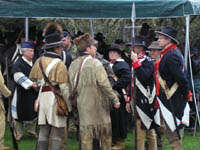 |
Another view of Jeffersonian Army reenactors portraying
members of the Lewis and Clark expedition.
|
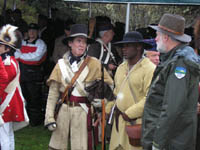 |
Another reenactor also portrayed Captain William
Clark's manservant York.
|
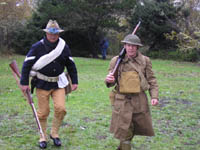 |
The reenactors at the opening ceremony did not confine
themselves to the Lewis and Clark expedition, but also portrayed service-members
from all of America's past conflicts. Here we see a World War I "Doughboy"
(right) and a Soldier who fought in Cuba during the Spanish-American
War. |
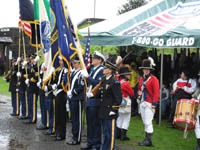 |
Members of the multi-Service color guard (US Army,
US Air Force, US Navy and US Coast Guard) prepare to present the
Service Flags, State Flags, and National Colors at the Fort Stevens
opening ceremony. Several members of the Lewis and Clark Fife and
Drum Corps, dressed in Jeffersonian Army musicians' uniforms, can
be seen immediately to the rear of the color guard. The corps is
one of America's few all-youth corps, with members ranging in age
from 10 - 18. The young musicians play replica fifes and rope-tension
drums used during the Eighteenth and Nineteenth centuries. Their
uniforms are red wool coats and bearskin crested hats, patterned
after those of US Army field musicians of the period 1804 - 1810.
|
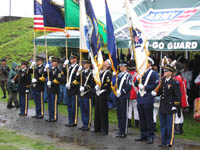 |
Another view of the multi-Service color guard.
The flags are arranged in precedence, with the National Colors to
the right of the line, followed by the State flags and Service flags
in order to seniority. Absent from the color guard is the US Marine
Corps Flag, which is senior to all other Service flags with the
exception of the US Army.
|
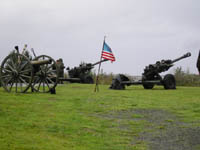 |
Salute batteries were arrayed on both the Washington
State and Oregon sides of the Columbia River to commemorate the opening
ceremony. In this photo you can see the Oregon saluting battery which
was composed of three modern 105mm howitzers and one Napoleon Brass
12-pounder of Civil War vintage on the rampart of Fort Stevens. |
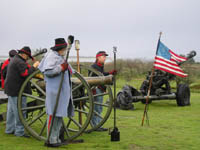 |
The gun crew of the Napoleon Brass 12-pounder goes
through the motions of preparing to fire a blank charge.
|
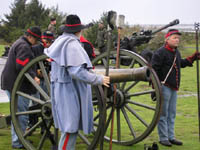 |
Close up view of the reenactors who were representing
a Civil War era Federal artillery crew during the opening ceremony
of "Destination - The Pacific".
|
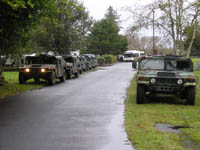 |
Soldiers of the Oregon National Guard,
to include members of the 1st Battalion, 162nd Infantry, 41st Separate
Infantry Brigade (Enhanced) provided logistical support to the opening
ceremonies.
|
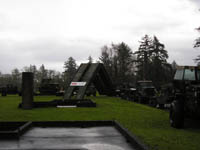 |
Company B of the 52nd Engineers (Oregon Army National
Guard) also had several pieces of the equipment they use on display
on the grounds of Fort Stevens during the opening ceremonies. |
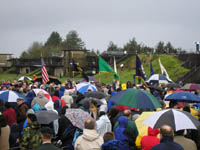 |
Spectators stand as the color guard makes it way
forward. Presentation of the colors was followed immediately afterward
by a rendition of the National Anthem by the former Miss America of
2002, Katie Harman.
|
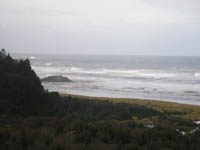 |
A view of the Washington State coastline near Cape
Disappointment, located about five miles south of Long Beach, WA.
The expedition ventured as far north as Cape Disappointment, named
by an English seafarer in 1788, in search of natural harbors and anchorages
that could shelter trading vessels from storms. |
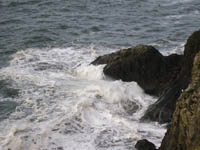 |
Can you imagine paddling a open wooden canoe for
thirty miles in these rough waters? The Lewis and Clark expedition
did, traveling from Fort Clatsop, Oregon back up the Columbia River
to cross over at a narrower point than its turbulent five mile wide
mouth before traveling back down the Columbia along the Washington
State shoreline to reach Cape Disappointment. |
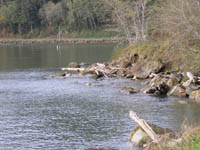 |
A view of Dismal Nitch where a great storm forced
the expedition to hunker down for five days (November 10 - 14, 1805)
on the Washington State shoreline one mile east of the mouth of the
Columbia River. This must have been especially frustrating to Meriwether
Lewis as he had already sighted the Pacific Ocean. This site is located
along Highway 101 approximately one mile west of the present-day Astoria-Megler
Bridge. |
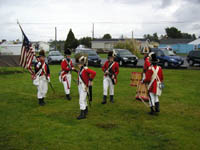 |
Members of the Lewis and Clark Fife and Drum Corps
at Long Beach, WA.
|
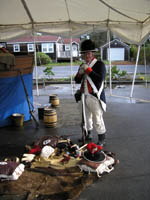 |
A Corps of Engineers employee portrays a member of
the Lewis and Clark Expedition at the National Park Service Corps
II traveling exhibit at Long Beach, WA.
|
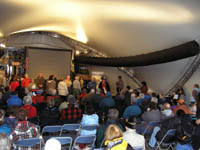 |
Two Corps of Engineers reencators introduce spectators
to the intricacies of nineteenth century dancing. One reenactor is
portraying Private George Gibson, a river hand enlisted by Lewis and Clark
who also possessed considerable musical talents. The Lewis and Clark
journal frequently make mention of Private Cruzatte playing his fiddle
at the end of a tiring day to help lift the morale of his fellow Soldiers. |
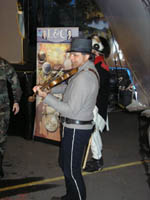 |
Private George Gibson, dressed in the uniform of a new
recruit, playing his fiddle for the spectators in the Corps II portable
exhibit hall known as the "Tent of Many Voices".
|
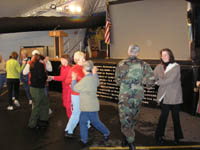 |
Some of the spectators at the Long Beach, WA event
try their hand at nineteenth century style dancing.
|
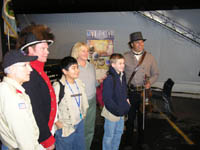 |
Private George Gibson, along with his able assistant,
pose for photographs with their fans after the music has ended.
|
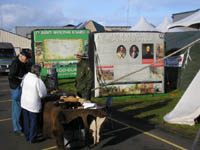 |
The Oregon Army National Guard had a display tent
at the Long Beach, WA Lewis and Clark commemorative event.
|
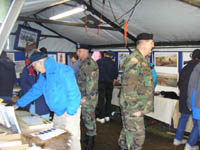 |
The Army National Guard display tent featured information
on the Lewis and Clark expedition as well as citizen soldiers throughout
our nation's history.
|
|
|
US Army Corps of Engineers
reenactors belonging to "Captain Lewis' Company" begin
a long day of fatigue duty at their encampment in Long Beach.
|
|
|
A view of the Salt Works employed by the Lewis and
Clark expedition to boil seawater in order to obtain salt used to
cure meat and for trading purposes with neighboring Native American
tribes. This kiln, which was reconstructed on the site of the original,
is located in the present day town of Seaside, Oregon. The stone
kiln seen here is located about 30 minutes by automobile from Fort
Clatsop, which translates to a trek of several days by the Lewis
and Clark expedition.
|
|
|
The Salt Works were established on 3 January 1806
and remained in operation until 20 February 1806. During that period,
the three members of the expedition detailed as "saltmakers"
succeeded in obtaining four bushels of salt.
|
|
|
Another view of the Salt Works. The actual site
was established in 1900 by the Oregon Historical Society using oral
history accounts from Native American tribes who lived in the area
at the time of Lewis and Clark.
|
|
|
How did the members of the Lewis and Clark expedition
live while they were building Fort Clatsop? Here you can see an
example of the canvas tentage used as shelters by the enlisted men.
|
|
|
One of the members of the expedition is seen here
using a specialized tool to scrape fur from a pelt that will be
used to make new clothing.
|
|
|
Another view of the tentage used by the Lewis and
Clark expedition while they were building Fort Clatsop. This temporary
camp is located in the Lewis and Clark National Forest about fifty
yards from the actual site of Fort Clatsop.
|
|
|
Several reenactors are busily engaged building a
new smokehouse for the Corps of Discovery to store meat brought
in by hunting parties.
|
|
|
The replica of Fort Clatsop, which was originally
built in 1955, burned to the ground on 8 October 2005. It is scheduled
to be rebuilt beginning in December 2005. Until then, members of
the National Park Service and academia are conducting an archeological
dig on the site hoping to find several more artifacts from the Lewis
and Clark expedition.
|
|
|
Archeologists searching for artifacts at Fort Clatsop.
The concrete foundations, barely visible in the background, were
laid in 1955 when the replica was built. The real Fort Clatsop did
not have any concrete foundations as it was constructed entirely
of wood.
|
|
|
Another view of the ongoing archeological dig at
Fort Clatsop.
|
